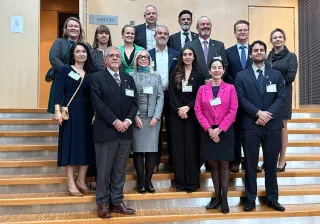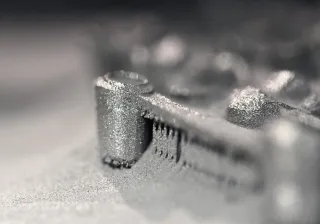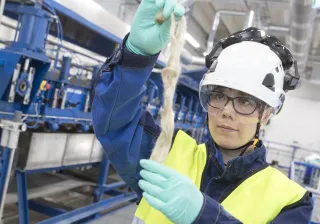VTT has shown in laboratory tests that side streams containing zinc originating in the steel industry can be used to remove sulphur from the biomass gasification process almost as efficiently as using the current commercial zinc oxide products. By substituting at least part of the primary ZnO by steel industry side streams, the price of absorbing pellets and environmental load can be lowered significantly. This will also increase the circularity of the material since the dust will be used for sulphur removal of gases before it will go for zinc recovery.
Zinc oxide pellets are used to absorb sulphur in the gasification of biomass. Zinc oxide has an excellent ability to bind sulphur from gas mixtures containing it. It is estimated that in the future, as much as yearly 5,000 tonnes of zinc oxide will be needed in Finland alone to purify syngas formed for example in the gasification of biomasses which can be used to produce renewable transport fuels and chemicals.
The future challenge of this potential raw material based on a side stream, now proven feasible, is to create new business activity, i.e., to transfer the process to an industrial scale in a cost-effective manner. The three-year DESULF project aims to tackle this challenge.
Zinc dust contains small solid particles that hang in the air and slowly settle on surfaces. If inhaled, it may have significant adverse health effects. The finest material is usually the most difficult to treat and recirculate.
The steel industry's side streams in Europe generate several thousands of tonnes of zinc-containing dust each year, which, at its worst, is treated as hazardous waste. The treatment of hazardous waste is very expensive and the environmental load created by it is high.
In the industry, fine dust can already be collected carefully at the process stage, but the dust thus collected, including hazardous waste, has been challenging to process further. Studies conducted by VTT have shown that dust collected at steel plants is of interesting composition and suitable for granulation/pelletisation. By combining these two features, an advantage for the side stream in question can be created, as the treatment process of the side stream into a new product is simple and affordable.
The project will last 3 years (1 January 2020 to 31 December 2022) and will involve 4 partners: VTT Technical Research Centre of Finland (Finland), Catalyco (Latvia), ArcelorMittal (France), and Höganäs (Sweden). It is funded by the EU EIT Raw Materials. The project aims to bring the sulphur-binding material now developed to the market.
Further information
VTT Technical Research Centre of Finland Ltd
Pertti Lintunen, Senior Scientist
[email protected], tel +358 40 5370124
CATALYCO
Reinis Spunde, CEO
[email protected], tel. +371 29266199
www.catalyco.eu






